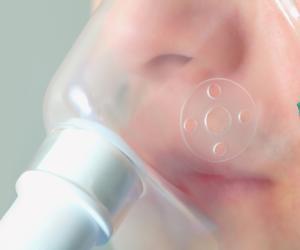Preventing Exacerbations of COPD

According to a statistic, 65 million people have moderate to severe chronic obstructive pulmonary disease (COPD) around the world. More than 3 million people have died because of COPD in 2005, which corresponds to 5 percent of all deaths globally. This puts COPD as one of the major causes of morbidity and mortality in the world. The total amount of deaths caused by COPD is projected to increase by more than 30 percent in the next 10 years, unless urgent action is taken to reduce the underlying risk factors, such as tobacco use. It has been estimated that chronic obstructive pulmonary disease (COPD) will come in third place as the world’s main cause of death by the year 2030.
Exacerbation of COPD
A periodic escalation of the symptoms of cough, dyspnea, and sputum production are major contributors to a worsening lung function, impairment in the quality of life, need for urgent care or hospitalization, and cost of care for patients with a COPD condition. Patients who have COPD respond differently according to the specific COPD exacerbations. For this reason, COPD patients benefit in a different manner from a combination of various treatments. The importance of preventing exacerbations in patients with COPD has been recognized, and three key elements play a role in its prevention.
Ways to Prevent COPD Exacerbations
- non-pharmacologic therapies
- oral therapies
- inhaled therapies
Non-Pharmacological Therapies
Preventive non-pharmacological treatments for the exacerbation of COPD include pulmonary rehabilitation. Pulmonary rehabilitation is an important component of COPD management, and it must be delivered when the individual is in a stable state. The main goal of pulmonary rehabilitation is to minimize the symptoms, enhance the patients’ functional capacity, and increase the patients’ involvement in the complex management of the disease.
After pulmonary rehabilitation, COPD patients tend to tolerate certain exercises with minimal breathlessness and anxiety. Their overall health also shows significant improvements. Moreover, through pulmonary rehabilitation, the number of hospitalizations of COPD patients due to exacerbations is notably reduced.
Exercises should be done correctly and safely to reduce the shortness of breath in COPD patients. Shortness of breath is called dyspnea and almost all individuals with COPD have it.
The influenza vaccination has been identified as a possible means for reducing exacerbation rates, as it can reduce the incidence of influenza and pneumonia in COPD patients. The general guidelines for reducing COPD exacerbations include proper hand hygiene, as regular handwashing is the easiest way to prevent an infection. Moreover, it is best to avoid close contact with people who have a cold or flu because such conditions can dramatically impact patients with COPD.
The use of a handheld spirometer is also recommended as a means to monitor the condition in terms of lung capacity and functioning. Thus, it can determine potential signs of COPD exacerbations.
Oral Therapies
Many doctors recommend oral therapies, such as bronchodilators, anti-inflammatory drugs, and antibiotics to prevent exacerbations of COPD. Bronchodilators are utilized to reduce a dynamic hyperinflation, which is known to be the mechanism that causes the patient to feel breathless.
There is a better lung function recovery and a reduced mucus hypersecretion when the treatment involves a combination of long-acting types of bronchodilators. Taking anti-inflammatory drugs for the management of COPD helps in altering acute inflammatory responses to bronchial infections.
Antibiotics, however, may reduce the risk of exacerbations in patients with frequent episodes characterized by increased phlegm, purulent sputum, fever, and malaise. Bacteria can be isolated from the sputum during periods of stability but are particularly associated in times of exacerbations. Antibiotic therapy should be instituted based on an increased sputum purulence and/or volume. Regardless of antibiotic choice, treatment reduces mortality and treatment failure in exacerbations of patients who are moderately or severely ill. Bacteria isolated during exacerbations are generally sensitive to most broad spectrum antibiotics.
Inhaled Therapies
The use of inhaled long-acting beta-agonists, inhaled corticosteroids, or inhaled long-acting anticholinergics may reduce the risk of COPD exacerbations by keeping the lungs working at peak levels. Inhaled corticosteroids were initially used in COPD based on the fact that they work well in asthma. With the use or combination of all of these methods, the chance of exacerbations can diminish significantly if the medication is taken appropriately.
A significant improvement is seen among patients who have pulmonary artery pressure and pulmonary vascular resistance after having a long-term oxygen therapy. Having a continuous oxygen therapy can also improve a patient’s cardiac output and can even reverse polycythemia (increased level of RBCs in the bloodstream).
Tips for Patients to Avoid Acute Exacerbations
Exacerbations can be very serious and can cause death. Getting help early is therefore very important. Not all exacerbations can be prevented, but there are ways to limit on how severe they can become. The following tips are given below to help patients suffering from COPD to stay well. Keep a close watch on the early warning signs and keep your health care team informed to avoid acute exacerbations.
- Ensure that you meet your doctor at your regularly scheduled appointments even if you feel fine.
- Keep a check on whether you are due for a pneumonia or pertussis shot.
- Get your flu shots on time.
- Keep your hands clean all the time. Wash them often with mild soap and warm water for twenty seconds. Carry a small bottle of hand sanitizer if you cannot wash your hands with soap and water.
- Educating patients, carers, and family members may aid in the early recognition of exacerbations.
- While out in the public, avoid touching your eyes, nose, or mouth to prevent germs from entering your body.
- During the flu season, stay away from crowds.
- Use your own pen all the time.
- Ensure that you get adequate rest and sleep. Your body is more likely to fall ill when you are tired.
- Drink plenty of water. A thick sticky mucus is more likely to get stuck in your lungs and cause problems.
- Exercise regularly and maintain a healthy diet.
Ensure that the air in your home is pure and free from allergens and irritants that can cause your immune system to react and make your breathing more difficult. You can do this by keeping your home well-ventilated, not allowing smoking in the house, removing clutter, and installing an air filtration system, among others.











